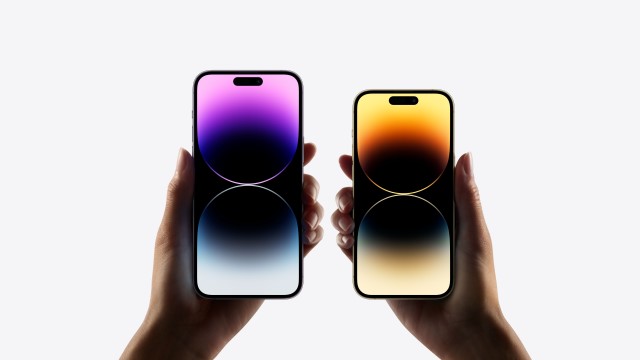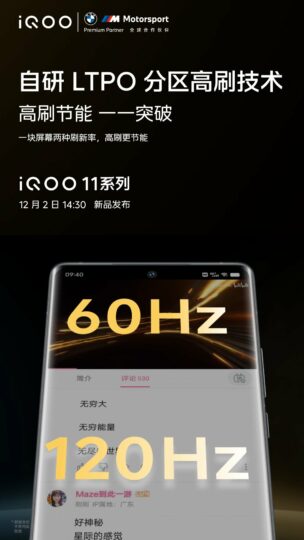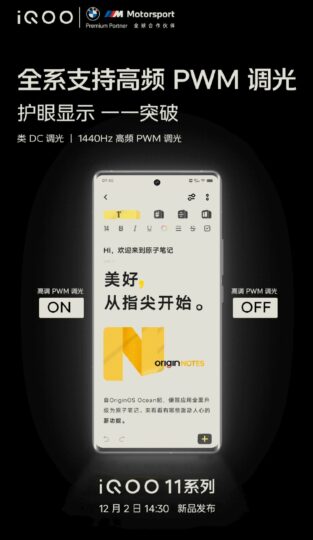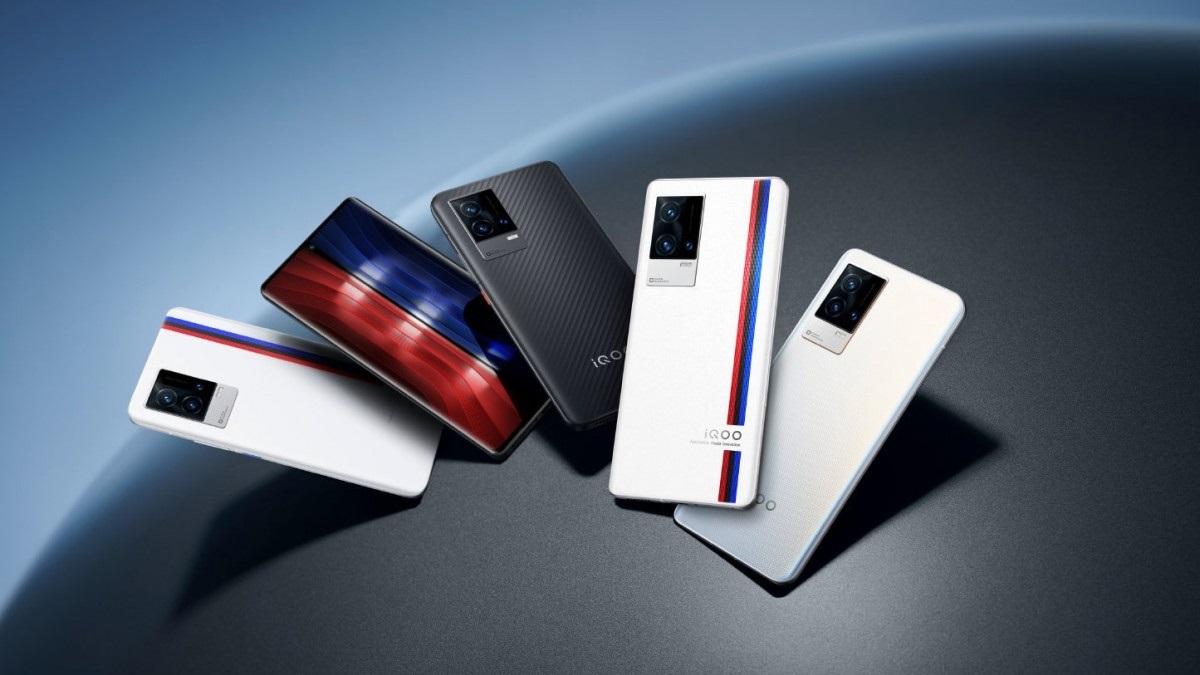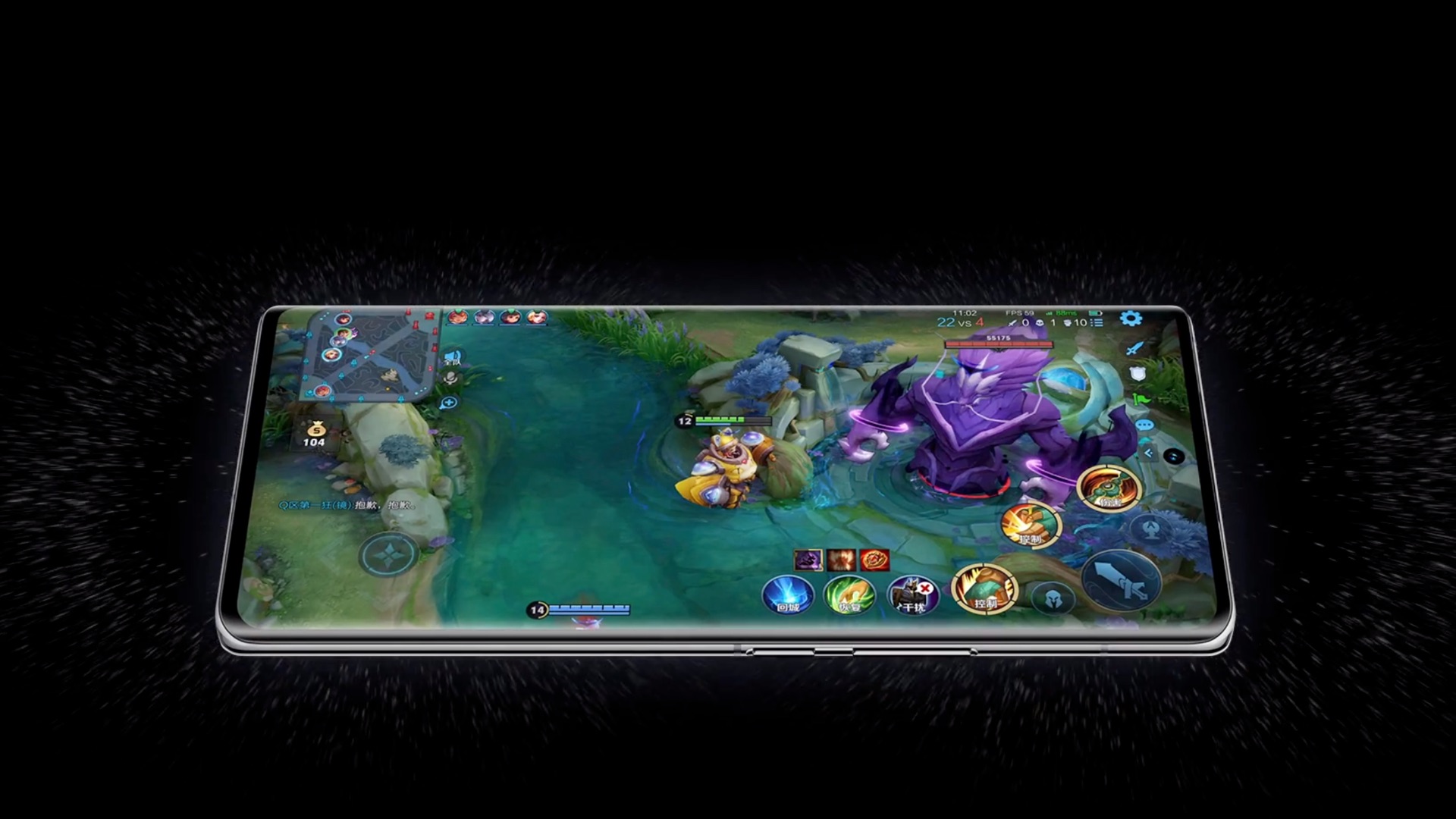
Vivo has already announced its next-generation flagship smartphone, the Vivo X90 Pro+. It uses Samsung's E6 OLED panel with QHD+ resolution, up to 1,800 nits peak brightness, LTPO 4.0 refresh rate control, 1,440Hz PWM (Pulse Width Modulation) system, and Dolby Vision.
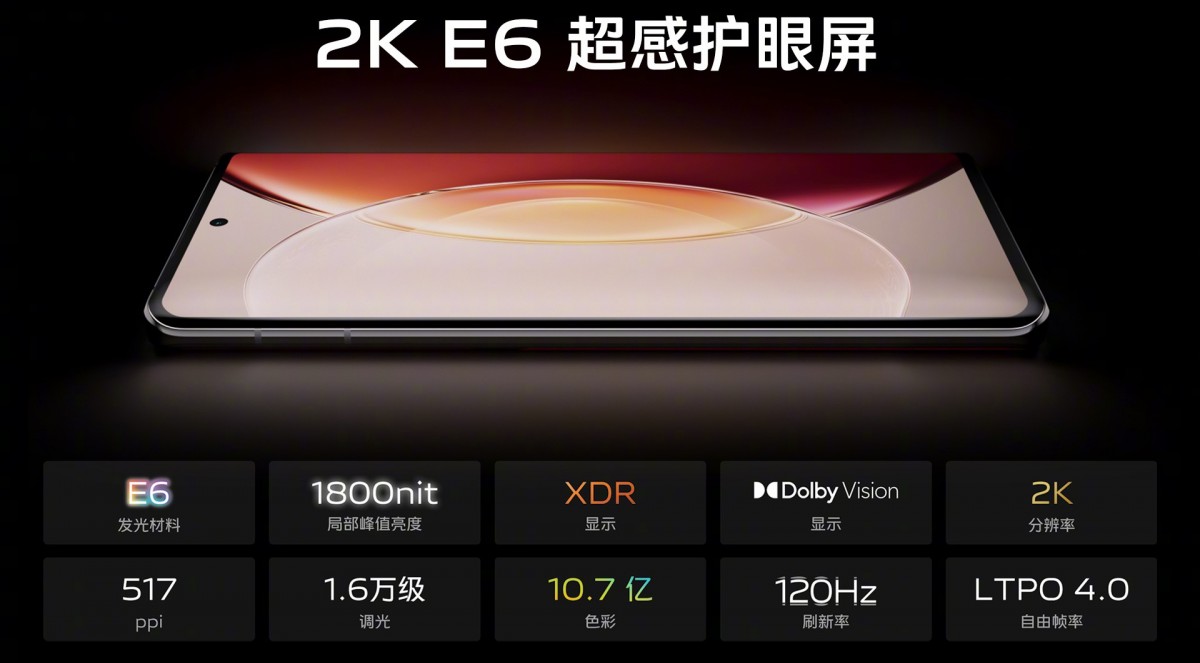
Similarly, Vivo's sub-brand iQOO is launching the iQOO 11 with the same E6 OLED panel featuring 2K resolution, a 120Hz LTPO 4.0 system, up to 1,800 nits peak brightness, and up to 1,440Hz PWM system. Interestingly, it can drive two separate segments of the screen at different refresh rates. For example, it can run a YouTube video at 60Hz in one segment and the comments system at 120Hz for smoother scrolling. This can further improve the fluidity of the UI while conserving battery life.
Xiaomi's Mi 13 and Mi 13 Pro, its flagship phones for next year, will be launched on December 1 in China. They will reportedly use Samsung Display's E6 OLED panel with 2K resolution, up to 120Hz refresh rate, LTPO 4.0 technology, and 1,800 nits peak brightness.
We also know that Apple is already using Samsung's E6 OLED panels in the iPhone 14 Pro series, and the devices in the lineup can reach a peak brightness of up to 2,300 nits. Samsung's own Galaxy S23 Ultra will use the same E6 OLED panel with a reported peak brightness of 2,200 nits or above. In comparison, Samsung's rivals BOE and LG Display are still unable to reach the performance of the South Korean firm's OLED panels.
